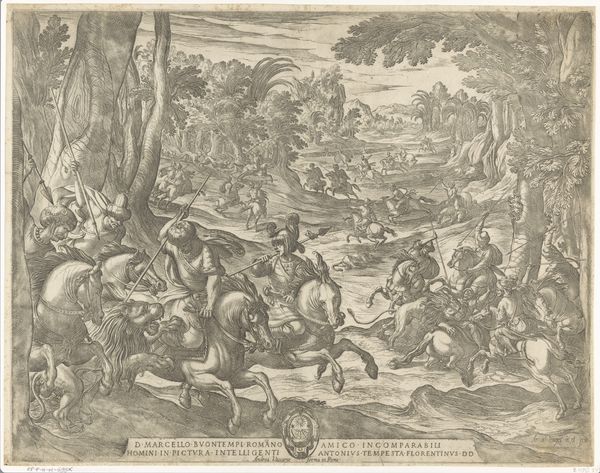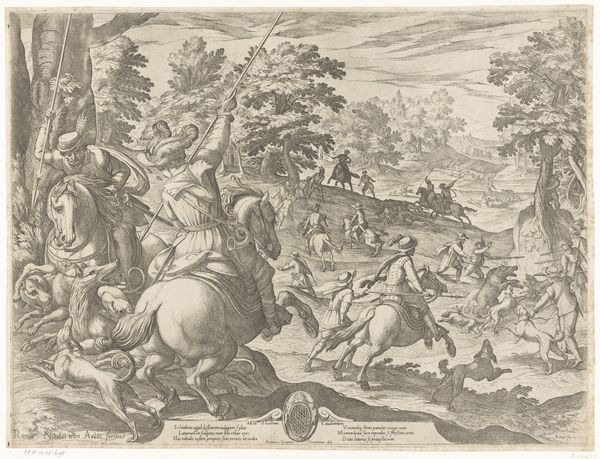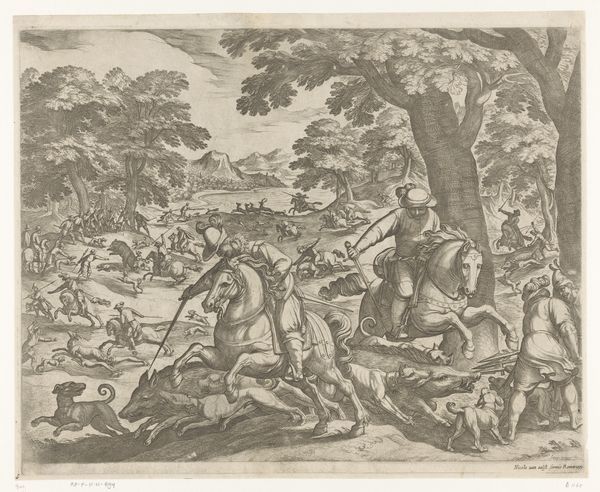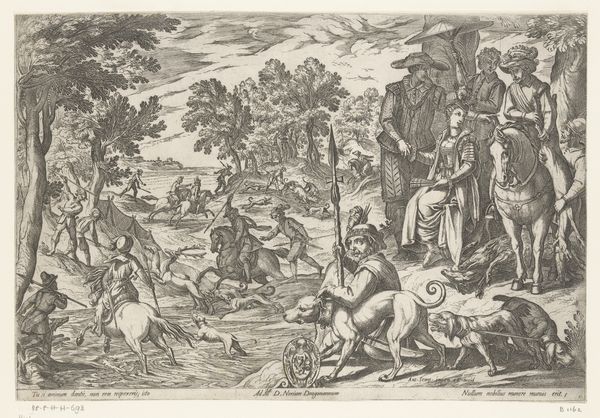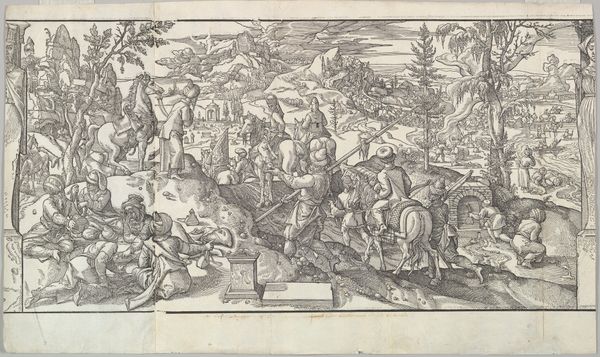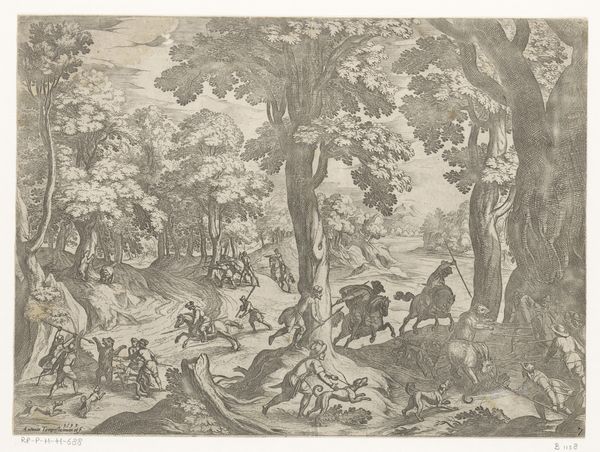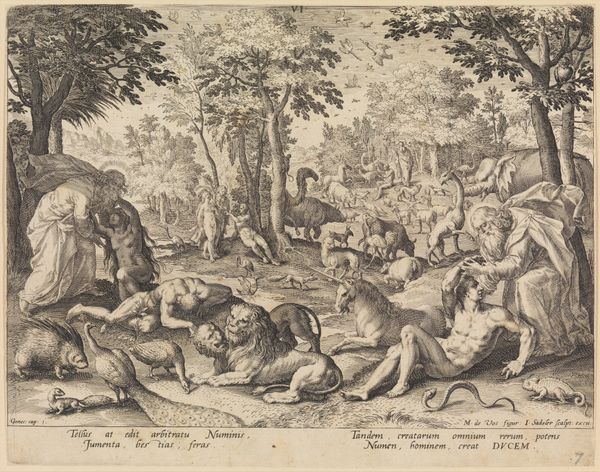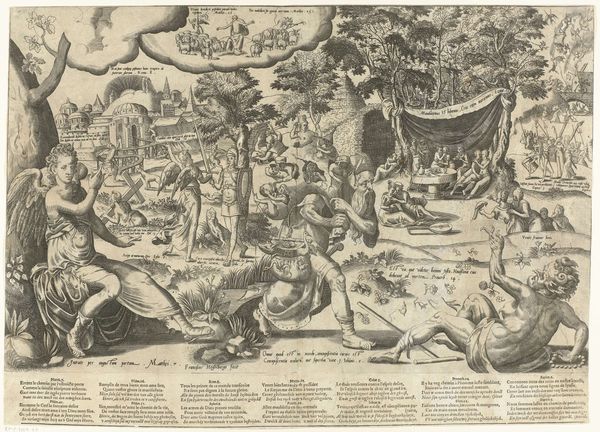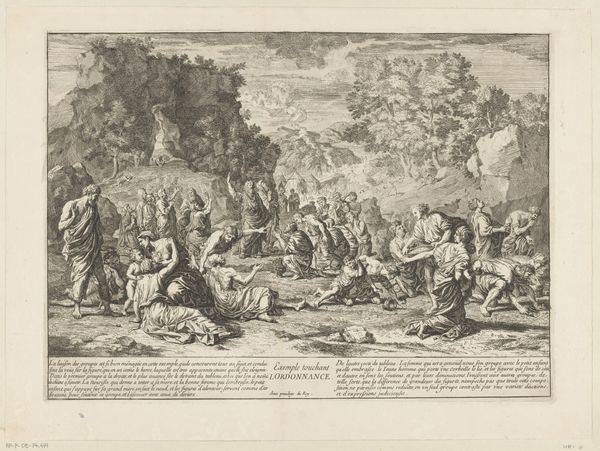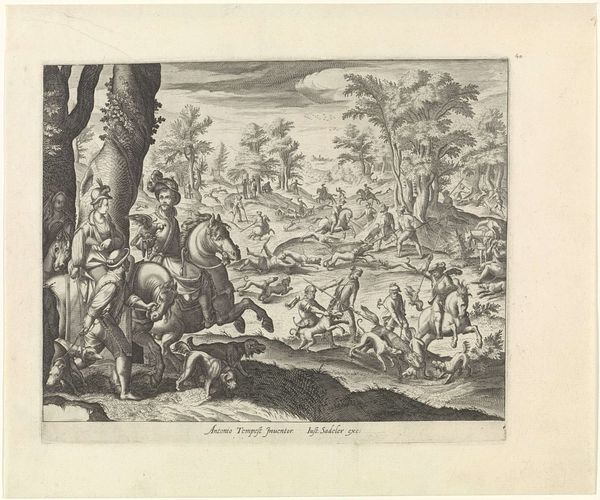
print, etching
#
ink drawing
#
pen drawing
# print
#
etching
#
landscape
#
mannerism
#
history-painting
Dimensions: height 425 mm, width 555 mm
Copyright: Rijks Museum: Open Domain
Curator: Let's discuss Antonio Tempesta's etching, "Hunting Scene with a Lord and Lady Watching," created around 1590, currently residing at the Rijksmuseum. What strikes you upon seeing this Mannerist print? Editor: The chaotic energy grabs me first. It's a landscape teeming with action, a frenetic swirl of bodies, both human and animal. A brutal spectacle frozen in ink. Curator: Absolutely. Tempesta was known for his dynamic battle scenes and hunting scenes, and this piece exemplifies his ability to convey movement and drama within a tightly controlled print medium. This work reveals aspects of social hierarchy in early modern Europe through imagery. Editor: It definitely speaks to privilege, doesn't it? The aloof lord and lady, observing the carnage from a safe distance. There's a detached quality to their presence, a stark contrast to the messy violence unfolding before them. It is about the ritualized demonstration of power, linking social status to the control over nature, over animals. Curator: Hunting was indeed an aristocratic pastime, a display of dominance and prowess. The composition reinforces this. The wealthy couple is positioned to the left, set off to the side while the central plane depicts active violence. But, Tempesta adds complexity to that message, he was, after all, also illustrating their active management of the land. Editor: Complex indeed, there's this idealized view that hides how brutal the hunts actually were. Consider the animals; are they rendered simply as beasts or with a touch of humanity? It complicates our reading, doesn't it, making it difficult to separate beauty from brutality. Also, where is the female agency represented here? Is it merely another demonstration of ownership? Curator: Those are valid questions to consider. We see a history of display being revealed and it can be uncomfortable to wrestle with. There is some historical ambiguity here as hunting, hawking, and other aristocratic practices had symbolic undertones in period paintings and were sometimes coded to express aspects of female behavior. Editor: Looking at the intricate details, the textures, the sheer density of figures—Tempesta really packed a lot into this image. Curator: Yes, it’s a Mannerist piece, emphasizing skill and artistry for their own sake. I do enjoy the play of light and shadow he created solely through line work and the dynamic way he used varied mark-making. Editor: It is an intense snapshot of a culture reveling in dominance, isn't it? Makes you think about what symbols of power we might be creating today. Curator: It offers an intriguing lens through which to examine our own societal values, indeed. Thanks for your insights. Editor: Thank you, it has been illuminating.
Comments
No comments
Be the first to comment and join the conversation on the ultimate creative platform.

